All issues

Volume 35 (1998)
- Issue 4 Pages 117-
- Issue 3 Pages 93-
- Issue 2 Pages 37-
- Issue 1 Pages 1-
Predecessor
Volume 35, Issue 3
Displaying 1-3 of 3 articles from this issue
- |<
- <
- 1
- >
- >|
-
Masaru NAGAI, Kouichi NAKAMURA1998 Volume 35 Issue 3 Pages 93-97
Published: September 25, 1998
Released on J-STAGE: June 08, 2011
JOURNAL FREE ACCESSIn order to clarify the effects of synthetic antibacterial agents mixed into drinking water on body weight gain in suckling piglets, Sulfamonomethoxine and Ormetoprim (SO) were used. Drinking water added SO diluted to 0.2% was provided to 54 piglets from 6 litters in the medication section and water was given to 27 piglets from 3 litters in the control section. The piglets were given water or SO mixed into water with ad libitum drinking at 1 day to 28 days using the water vessels for piglets. Clinical symptoms were examined together with body weight gain of 3 to 63 days and at shipping. As for the inspection of antibody in the blood a Toxoplasma gondii, Bordetella bronchiseptica and Actinobacillus pleuropneumoniae serotype 2 (APP II) were investigated. The piglets given liquid with SO showed better results in some aspects; diarrhea and eye patchy did not develop, body weight gain at 3 to 63 days as well as at shipping were recognized to be significantly high, and the changed positive rate of APP II was low. These results, therefore, suggest that ad libitum oral administration of the synthetic antibacterial agents mixed into drinking water prevents suckling piglets from diarrhea by the bacteria of mother sow origin, and that the method is effective in the body weight gain.View full abstractDownload PDF (594K) -
Yuuko OGAWA, Keiichi SUZUKI, Hiroyuki ABE, Hiroshi KANO, Masaru ITO1998 Volume 35 Issue 3 Pages 98-106
Published: September 25, 1998
Released on J-STAGE: June 08, 2011
JOURNAL FREE ACCESSEffects of feeds contained fish oil and rice bran on meat quality and production performance in pigs were investigated and meat quality of different sites of loin was compared. Sixty six three-way crossbred fattening pigs (32 barrows and 34 gilts) were used. Three experiments were carried out: addition of fish oil, experiment 1 and 2, and addition of rice bran, experiment 3. All pigs were individually reared and fed ad libitum from 30kg to 105kg body weight. They were given ration for finishing swine added rice bran or fish oil and slaughtered at 105kg of body weight. After 24 hours of slaughter, loin meat was sampled at the two sites of fifth-eighth thoracic vertebra (front loin) and thirteenth-sixteenth thoracic vertebra (rear loin). The following features of meat were measured: meat color, water holding capacity: drip loss and cooking loss, water and intramuscular fat content of meat, tenderness and pliability. There were no effects of feed content on meat production performance. Front site was different from rear site in meat color (PCS: pork color standard, a* value, b* value and L* value), drip loss and intramuscular fat. There were statistically significant correlations between meat quality and meat production performance in common to both front and rear site of loin. There were the correlations of b* value with age at 105kg body weight, daily gain with feed conversion ratio, water holding capacity with feed conversion ratio, intramuscular fat with backfat thickness, and tenderness with age at 105kg of body weight and backfat thickness. Many correlations of meat quality traits differed in front site and rear site of loin. At front site of loin, correlation between tenderness and intramuscular fat was significantly negative, but almost zero at rear site of loin. As an exception, correlations of drip loss with L value and PCS were high in both sites of loin. These results suggest that growth trait correlates with meat color and meat tenderness, and backfat thickness correlates with meat tenderness.View full abstractDownload PDF (1044K) -
Hiroshi KADOWAKI, Keiichi SUZUKI, Yuko OGAWA, Masaru ITOH1998 Volume 35 Issue 3 Pages 107-113
Published: September 25, 1998
Released on J-STAGE: June 08, 2011
JOURNAL FREE ACCESSA total of 258 Duroc pigs (50 boars, 149 gilts and 59 barrows) was used to investigate the relationships of leg soundness traits to meat performance and body size. Leg soundness score and the circumference of fore shank and hind shank were recorded, and heritabilities of leg soundness traits were estimated. Boars were reared individually and approximately 8-9 gilts and barrows were housed per pen, and they were fed ad libitum to grow from 30kg to 105kg of live weight. Meat performance traits, body size and the shortest circumference of fore shank and hind shank were recorded at 105kg of live weight. Leg soundness scores of the fore legs and hind legs were also marked for their structure using the NPPC method. The phenotypic and genetic correlations of fore leg soundness score with back fat thickness (BF) measured at five different positions were all negative and highly negative correlations of fore leg soundness score with BF at the fore part of the body were obtained. The phenotypic correlations between hind leg soundness score and BF were different in sex; positive values were observed only for boars and the values of gilts and barrows were negative. The phenotypic correlations between fore leg soundness score and chest width were low for boars, but values of gilts and barrows were negative. Although the genetic correlations between leg soundness scores and chest width were all negative, the values between leg soundness scores and body height were found to be positive. Heritabilities of leg soundness traits estimated by analysis of variance were .306, .231, .429 and .414 for fore and hind leg soundness score, and the circumference of fore shank and hind shank, respectively.View full abstractDownload PDF (855K)
- |<
- <
- 1
- >
- >|